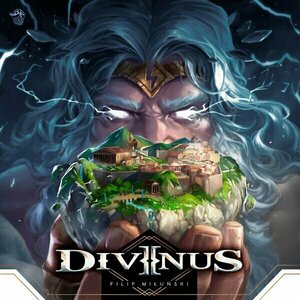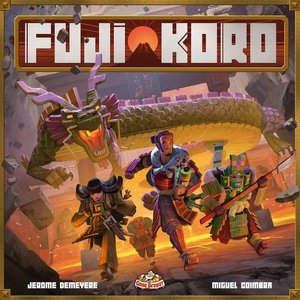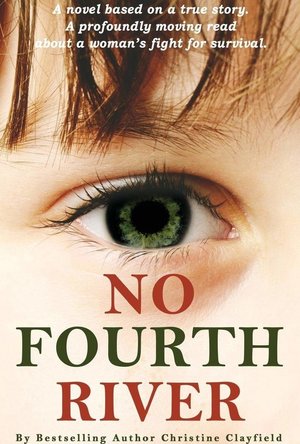
Air Hockey
Games and Entertainment
App
As seen on Supernatural and several other TV shows. "Air Hockey from Acceleroto is the best" -...

MLB Perfect Inning Live
Games
App
※ You will experience optimal game play in iOS 11. From the publisher of Baseball Superstars,...

Stickman Skate Battle
Games and Sports
App
Pack your skateboard and join the ultimate Stickman Skate Battle multiplayer PVP experience. Battle...

Restaurant DASH: Gordon Ramsay
Games and Entertainment
App
JOIN GORDON RAMSAY AND COOK YOUR WAY TO SUCCESS! Travel around the globe and master your skills in...

Isle of Skye
Games
App
SET YOUR PRICES, BUY, SELL, BUILD, AND MAKE CHOICES BECAUSE ONLY ONE CLAN CHIEFTAIN WILL WIN Five...
Boardgames BoardgameApp GreatGames TileLayingGames
Purple Phoenix Games (2266 KP) rated WizBang! in Tabletop Games
Aug 3, 2020
A-la-kalhambra! A wizard’s duel has been accepted between you and your rival. Based on the whims of judges wanting displays of specific and ever-changing magic-types, you must cast a flurry of impressive spells to best your opponent. The duel will last exactly 6 rounds and the greatest spellslinger will reign supreme.
DISCLAIMER: We were provided a prototype copy of this game for the purposes of this review. These are preview copy components, and the final components may be different from these shown. Also, it is not my intention to detail every rule in the game. You are invited to download the rulebook, back the game through the Kickstarter campaign launching in August, or purchase through any retailers stocking it after fulfillment. -T
WizBang! is a two-player card dueling game akin to a mashup of War and Crazy 8s. To setup, shuffle the large deck of WizBang! cards, and deal 30 to each player. Similarly, shuffle the small deck of Extra Trick Up My Sleeve cards and deal four to each player. Roll the magic die, place it on the Round 1 section of the round tracking card and the game is ready to begin!
A game of WizBang! is short, sweet, and light on rules. Perfect for that lockdown date night. The game lasts 6 rounds, and each round consists of playing five cards. First things first – roll that magic die. Yellow is Shiny magic, green is Slimy magic, and purple is Weird magic. This means that for the duration of the round, the judges only care about the values that correspond with the rolled magic type. So if Shiny is rolled, each card played (a la War) will compare Shiny values. Highest number wins both cards to the player’s VP stack.
However, Extra Trick Up My Sleeve cards can be played at any time, and can affect either yourself or your opponent. I have included some of those below. These cards do not count for VP at game end, but can certainly shake things up quite a bit during a round. In addition to these special cards, included in the WizBang deck are several Wizard cards that change the preferred magic type for the round or just for one trick. Once all six rounds have been played players count up their VP Spell cards and majority wins! If no majority: SUDDEN DEATH round.
Components. As I mentioned previously, we were provided a prototype copy of the game, but were assured that it is very close to the final version. This game is a bunch of cards and one die. The cards are nice and a little glossy, with sometimes funny art, and even better inside jokes on them. The die is nice quality and easy to interpret which magic source is being judged. All in all the components are good.
I also stated previously that this game is quick. The box says around 10-15 minutes and that’s spot on. I can see seasoned players being able to knock out a game in 5, but for the first few games we were in that 10-15 minute range. What I like about the game is that it is quick. We were needing something to fill a short timeframe, so I broke this one out, taught it to my wife, and played through once or twice before a child needed Mommy. So it definitely fits that bill.
However, the game play itself is a little lacking. Don’t get me wrong – I would play this again, and I would even use it to help teach my son (4 years old) several gaming concepts, but without using the cheat cards. It is basically a combination of War (play a card, winner takes both) and Crazy 8s/UNO (constantly changing trumps) with a wizard duel theme. I love wizards/fantasy themes in my games, so I am still somewhat drawn to this, but ultimately, if I want to play War or Crazy 8s, I might simply break out a normal deck of playing cards to do so.
The game is not at all bad. I really want to stress this. Just for gamers, it is a bit elementary. This would be great in a library’s game collection, or for educational purposes, or even simply as a quick filler game if you want a theme for your War/Crazy 8s hankerin. Need a game for younger gamers? Yes, this. Need a quick game for grandparents or in-law nongamers? This. Don’t know what to play and you’re running out of time (happens to me OFTEN)? This. If you need something like WizBang! in your collection to fill a 2-player fantasy card game hole, definitely check this one out.
No Fourth River is a very powerful story about swimming up to surface, when the world is against you. A story about child abuse unlike anything else, and one very determined woman.
This is the second Audiobook I have listened to, with the first being Ready Player One. Two completely different experiences. It was disturbing listening to such a painful story for a while, and it took me a long time to finish it.
The story of Christine is so sad and so unique. She is being molested by her father in ways you could never imagine. She goes to boarding school and she is being bullied even by the nurses. She wets her bed every single day. And bad things keep happening, one after another, after another, until she is in her thirties and almost dies being beaten to almost-death by her husband.
And then she decides to change her life and to be the most successful woman.
At first, when I read the synopsis, the thing that thrilled me was the ill mother that suffered from dementia. I thought this book will revolve and focus on this point, but it didn’t. And I was very disappointed.
Then I manned up, and decided to continue listening, despite my unhappiness. It was a decent story, a powerful, motivational one, but not realistic. And it hurts me saying this, because this book is autobiography. Of course these terrible things happened. But I didn’t felt for the woman. Not in a way I usually would.
The writing was just about average, or maybe the woman reading in the audiobook was to blame. I will leave that up to you, who have listened to the audiobook, or choose to do so.
The character of this woman was honest, but I still can’t imagine how and why a person would stick to people that keep hurting her, despite everything. Even if love, even if forever after, I would not stay one more day with a person if he, for one moment, loses control and raises a hand over me. I would be out of the house in a minute, never returning back. A man would never hurt a woman. No matter what she could do, or couldn’t do. I can argue for hours, and I can admit being wrong, and I can cope with being yelled at, because I have done something stupid. But the moment the line is crosses, I would be out – FOREVER.
If you guys are looking for a story that will keep you thinking about whether you’ve made right decisions, this is a great book for you. A powerful success story of a woman that was brave enough to say NO (after a few years, that is) and brave enough to start building a new life. I recommend it, even though I personally did not really enjoy it a lot.
I have won this Audiobook as a giveaway from LibraryThing, and all my opinions are honest and completely unbiased.
Carma (21 KP) rated She's the One (Just Everyday Heroes: Night Shift, #1) in Books
Jun 17, 2019
Shes the One is the 1st book in a 5 part Counting on Love series by Erin Nicholas. It is apparently a continuation of sorts to Nicholas Bradford series with some characters bridging the gap. I havent read the Bradford series as of yet but with some characters Ive met I definitely will start asap.
Amanda Dixon is the oldest of her 3 sisters. Her brother Connor is their oldest sibling and has been a father figure in their lives since their Dad died unexpectedly years ago. She is the leader, the mother hen, the one she wants her sister to come to for advice, help or anything really. She doesnt want to let her brother or sisters down, even as she has a secret in her past only Connor knows about. She knows she needs to have more of a life for herself but she cant seem to stop. Can she find a way to work and have fun too?
Ryan Kaye is an all around manly man. He is a top-notch paramedic, football player and party guy. He knows the Dixon sisters as well as their brother Connor, his quarterback, and can honestly say he is interested. Emma has flirted with him in the past but theyve never hooked up, not that he corrects the assumptions on that rumor.
Amanda assumes Ryan and her sister Emma have hooked up in the past, she envys Emma and how she handles herself. During a birthday party for her youngest sister, Olivia makes a birthday wish that Amanda and Emma trade places for one weekend. Each living life the way the other one would. That leads Amanda to make some wild choices for her weekend and she wants Ryan along for the ride. A motto of WWED (What Would Emma Do) makes her realize she had the wild child inside already.
Ryan cant believe Amanda wants him to be a part of her wild weekend. He is definitely the man for the job. What he doesnt count on is being the tame one during their night out. He realizes Amanda needs to get something out of her system and he doesnt like the way she thinks about him and his past. He does the hardest thing by walking away. Can he make her realize she needs him for more than just one wild night?
They have quite a few obstacles to overcome, Connor, a car accident and missed signals but Amanda and Ryan are both strong characters who know what they want.
I read this book 2nd after reading book #2 first. I can honestly say that usually bugs the heck out of me. Not so with this author and this series. Each book is individual even though part of a series. You can easily read each on its own and know pretty much all there is to know to enjoy the story. I love that about books in a series. It doesnt always help my OCD with reading order but it wasnt unbearable.
I will most certainly read more from Erin Nicholas (and have already).




